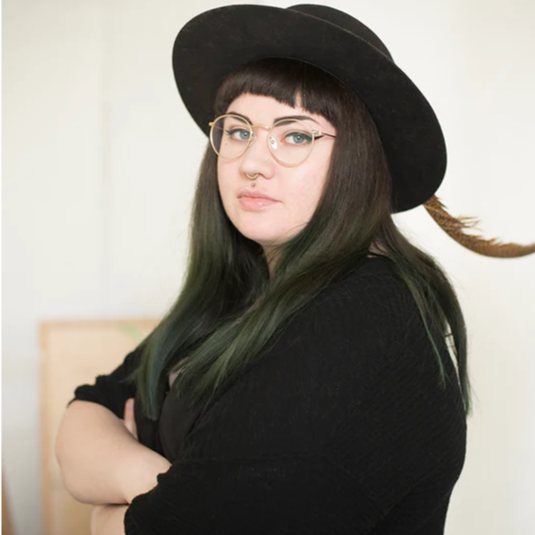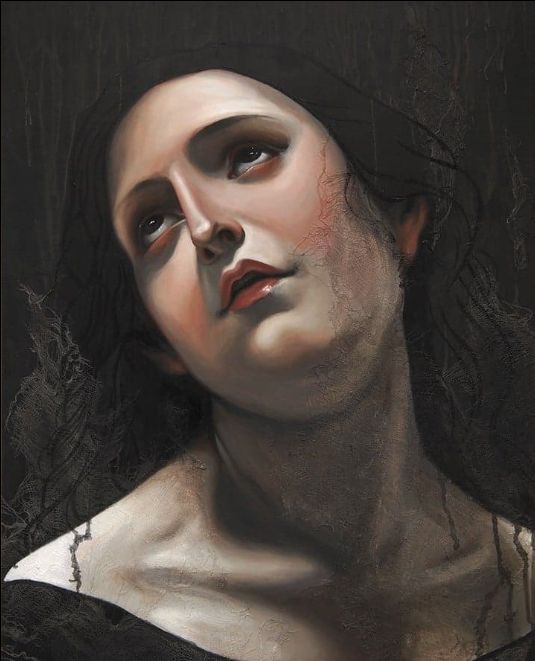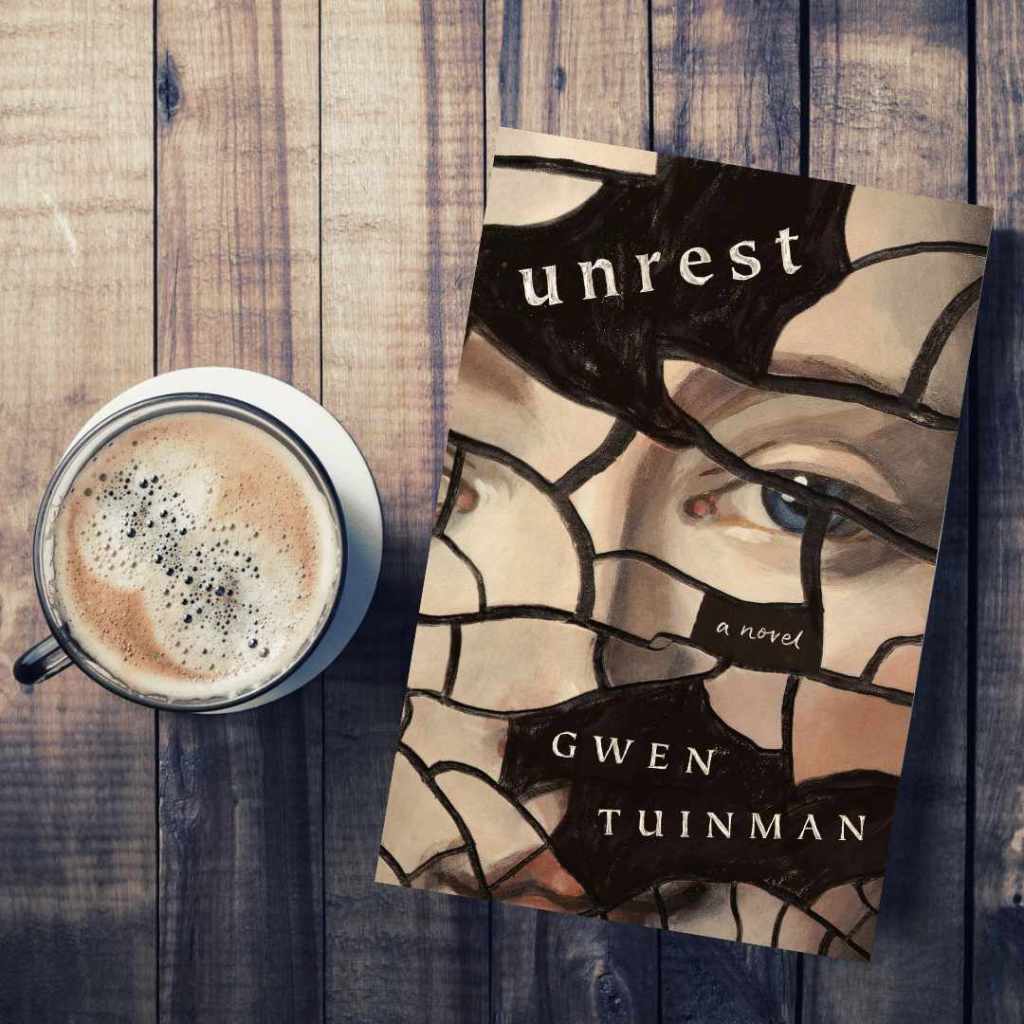
The cover of UNREST, my recently released 19th century historical adventure, is art. Quite literally.
This is a tale of coincidences. When book designer Talia Abramson incorporated the art of Toronto-based painter, Keight MacLean, I was over-the-moon excited. Of all the artists in the world whose work Talia might have selected, she’d been drawn to an artist I’d interviewed a few years earlier and adored. Keight works with paint and I work with words, but we both explore the suppression of women’s voices in history.
Today, I’m resharing our conversation from the fall of 2022.
***
It was my son, fine artist Zach Tuinman who introduced me to the works of Toronto-based painter Keight MacLean. There are similarities, I’ve learned, between themes she explores in paintings and the ones that surface in my writing. We’re both passionate about giving voice to women of the past. Keight’s website articulates that her work “seeks to celebrate the many women in historical portraits, either without name, known only in reference to their male relations or entirely unknown, giving a voice to the silenced.” Last summer I met Keight in person where she was exhibiting at the Toronto Outdoor Art Fair. What follows is our subsequent conversation..
G: Why have you chosen women’s self-expression as the central focus your paintings?
K: A lot of history we were taught in school centred on war and the military. I never found that history interesting. I care about what people’s lives were like. In particular, I wondered how it was for women in European history. I could only get their voices in tidbits. History fell flat because I never saw myself reflected there.
I have always loved paintings by the old masters. There’s never been an artistic beauty more idealized in my eyes. I used to work in their style, but it wasn’t until I started copying the old masters’ paintings in university that I thought about how we either knew nothing about the women in these paintings or knew about them only because of the men with whom they were related. That’s when I became interested in representation of women to history.
During my education, I spent time in Florence Italy studying art history, and saw lots of paintings entitled ‘portrait of a lady’, yet the women’s story was never told. This void was so dissatisfying.

G: In writing, we talk about “living the scene” to better know our characters. How do you do that as an artist?
K: For the past 6 years, I’ve participated in historical re-enactments of a 14th-century English mercenary company on campaign in Italy. Women weren’t exactly a highlight of the company, yet the culture of a mercenary company was a lot more cool about gender and race. Women’s names occasionally appeared on muster rolls and there’s evidence to suggest they may have fought with some mercenary companies. By participating in re-enactments, I experience what it was like to cook over open fires, live in historic clothes for days, use the same equipment, be it for hiking or cooking or gambling and interact at their level.
Next year, I’ll be doing an artist residency at the Chateaux Orquevaux in the Champagne Region of France. It used to be a hunting château; the kennels and stables had been converted into artist studio. The residency will give me time and space to to immerse myself completely in art with out the distraction of my usual daily life. Inspiration will be everywhere.
–o–
G: In your paintings, historical influence meets modern technique. Please talk about that.
K: When I did masters studies, I began playing with modern materials. I’d finish a painting then apply contemporary and experimental methods such as fluorescent spray paint, or re-harvested artists mediums and destructive techniques, such as cutting or sanding away parts of the painting. In a way it’s scary to do, but on the other hand it finalizes the painting. Experimenting and playing with unexpected materials became a big part of my art practice.
–o–
G: What are Re-harvested artists mediums?
K: It’s a series of artist’s materials made by Tri-Art, a Kingston Ontario company. They have a line of artist’s mediums mixed with tiny bits of recycled materials like walnut shells, plastic, glass, and copper cinder paints. The result is interesting textures in the work.

G: Do you view your art as activism?
K: My art is not activism. I’m just trying to exist, doing my thing and having a career. That being said, the artworld is male-dominated. I’m ‘fighting the power’, so to speak. When called upon, I strive to encourage, support, and share knowledge about how to build a successful art career to other marginalized artists trying to make their own way.
Living in a city like Toronto, it’s hard not to see people and places that need help. I give back whenever I can, both in my personal life and with my art. I’ve donated paintings to charity auctions that support the International Day Against Homophobia and Transphobia, and the Canadian Centre for Gender and Sexual Diversity. In honour of my grandfather, a history buff and painter, I’ve also donated paintings to The Brain Project for their Alzheimer and dementia research.
–o–
Many thanks, Keight for sharing your insights and for allowing us a glimpse into your artist life. I’d encourage readers to visit her three painting series, Darlings, Taken and Bitch Hunt for exquisite articulation of the story behind each. Click here.

UNREST is available at Chapters-Indigo and at Amazon.ca, or shop local at your favourite indie bookshop.

Leave a comment